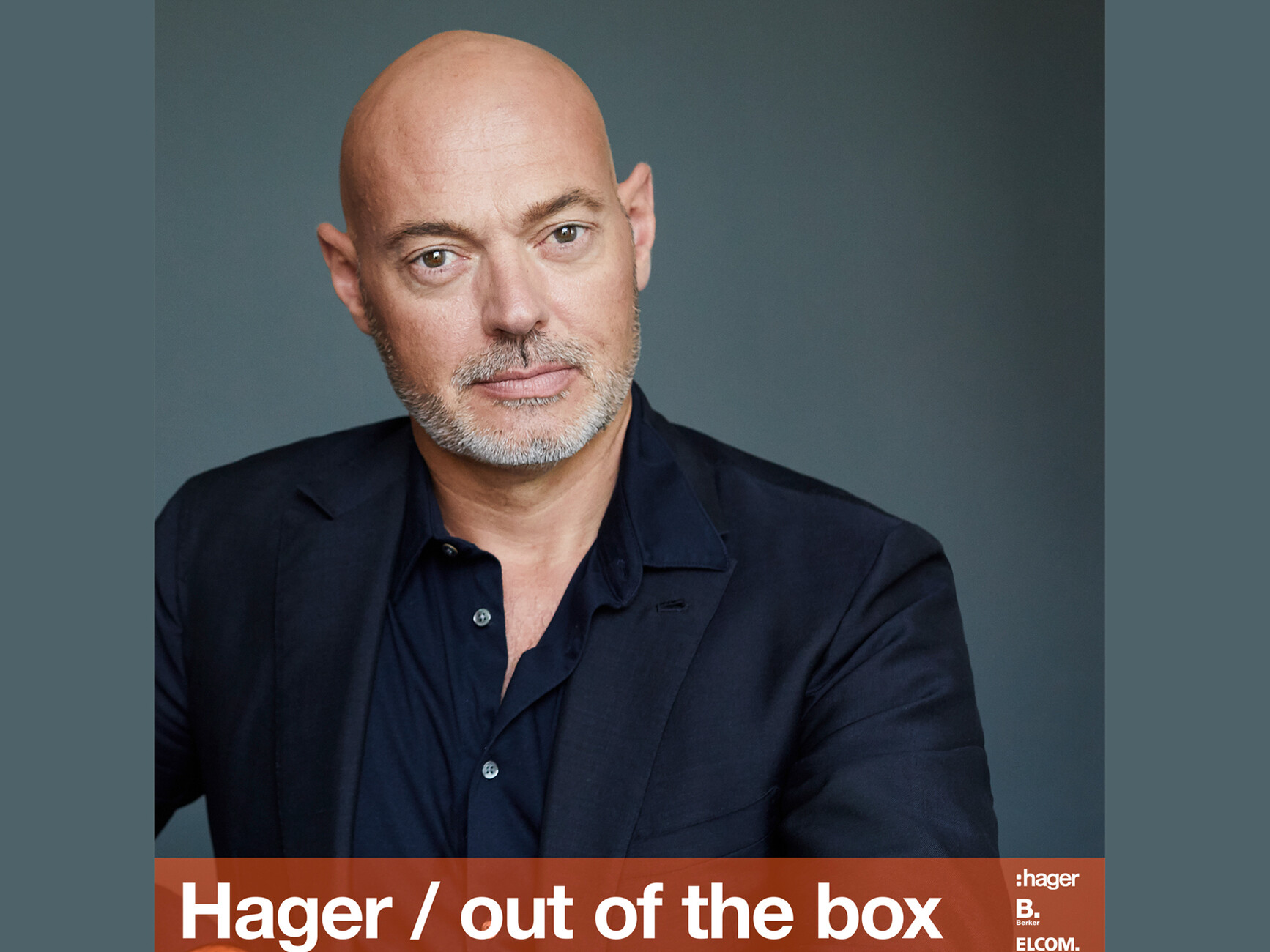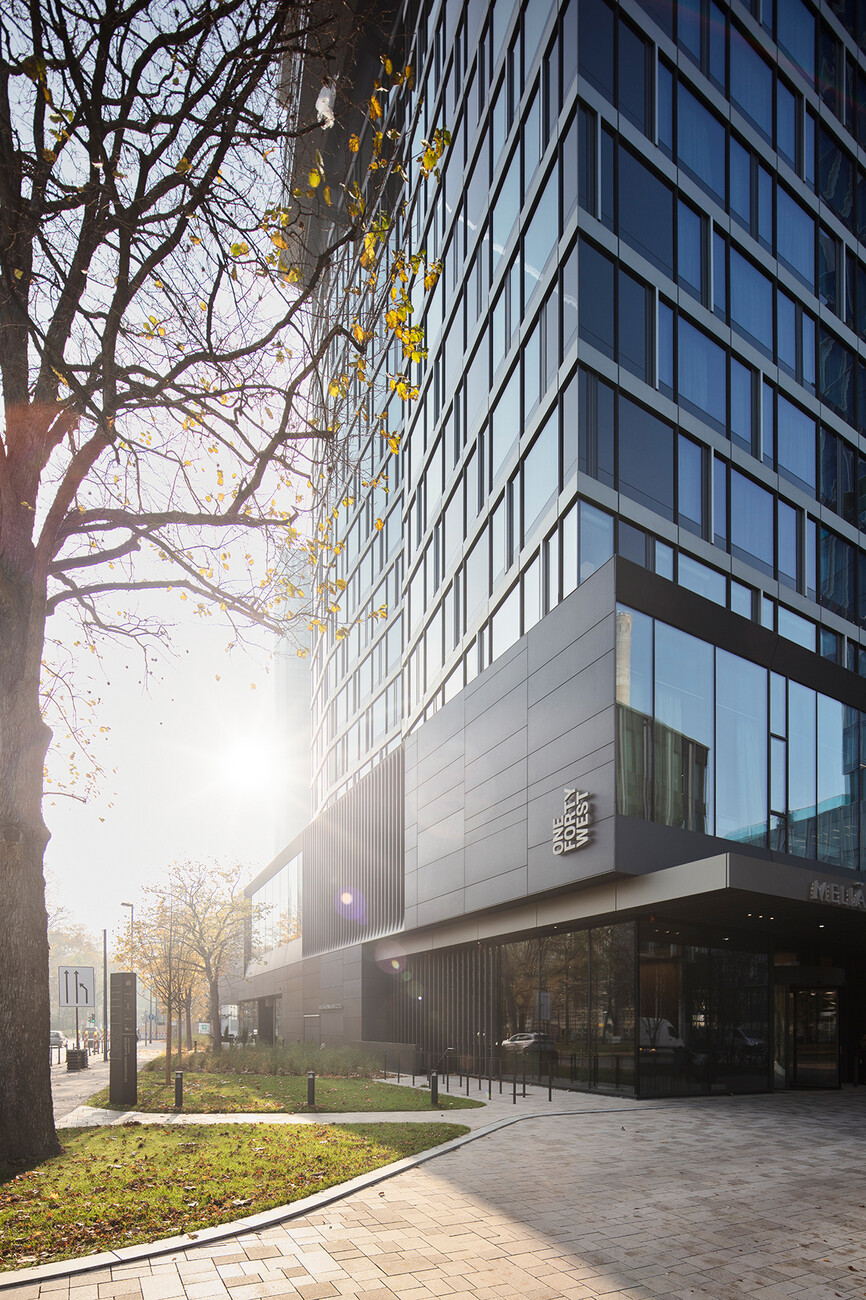Featured
Hager / out of the box
Andreas Moser, the last apartments in your 145-meter hybrid tower are currently being occupied. What do you think: Does the future of metropolises lie in such heights?
Andreas Moser: No. Vertical building is a spectacular, but at the same time more expensive special form of construction. It will therefore always remain an exception.
Many see stacking stories on top of each other as an answer to the question of affordable housing.
Andreas Moser: Look at Barcelona: We can achieve urban density in Europe very well without height. In Frankfurt am Main, however, skyscrapers are part of the trademark. This friendly little city is also internationally recognized thanks to its vertical silhouette. That's why Frankfurt will continue to build vertically in the future.
The 40 floors of One Forty West are now shared by residential users and a 430-room hotel. Is that the basic idea of the property: a mix of uses in the vertical?
Andreas Moser: Of course. With apartments, a hotel and a restaurant, there's still life at One Forty West even when the lights go out elsewhere. Right next door, we're building a daycare center. This will give the district an urban quality that our Central Business District in Frankfurt unfortunately lacks. The big towers there don't give the city anything.
The AfE tower of the Johann Wolfgang Goethe University, which used to stand on the site of One Forty West, was considered by many Frankfurt residents to be a landmark of left-wing science. Now, apartments can be found here, with purchase prices starting at one million euros. Is this an irony of history or simply its course?
Andreas Moser: Both, and it's even more ironic because the AfE Tower was a representative of Brutalism. Although our building is not an example of brutalist architecture, One Forty West is also a rather tough building. For me, there is also a personal story connected with the previous building, because a friend of mine, who has unfortunately passed away in the meantime, completed part of her studies there. When I stood in the excavation pit after the AfE tower was demolished and looked up, I thought to myself: I'll rebuild it for you.
Within sight of your One Forty West, BIG Architekten have built another hybrid tower, the Omniturm. What similarities do you see between the parallel projects?
Andreas Moser: BIG has succeeded in making its building a trademark in a quasi minimally invasive way by swinging its hips. I see similarities in our architectural language and the typology of both hybrid towers. A radical difference lies in the greater structural depth that BIG was allowed to plan and which allows their Omni Tower a greater variety of uses. The urban development framework plan for our Senckenberg Quarter was still from the early 2000s and restricted us quite a bit in terms of construction and use. Nevertheless, I think we have created well-designed spaces that will function for the next hundred years.
The construction area of One Forty West has been considered a kind of non-place between Westend and Bockenheim. How do you breathe life and vitality into an urban wasteland?
Andreas Moser: Among other things, by accommodating daycare centers, restaurants or other cultural facilities with a high public profile on the first floors. As planners, however, we can only make suggestions. The investors make the decisions.
Does that mean that in projects like the Senckenberg Quarter, the only thing that counts is the return on investment?
Andreas Moser: No, but investors naturally have other ideas about value chains. In small cinemas or galleries, they tend to see a need for cross-financing. That's a hassle for them.
Nevertheless, as an architect you can fight for the social added value of your buildings.
Andreas Moser: And that's what we do. But the influence we architects can exert is massively overestimated. Because we are usually the most visible players in a project, many believe that we are responsible for everything. We're just the link between the development plans and the expected return on investment.
Aren't you making yourself artificially small?
Andreas Moser: No. The big game takes place behind the scenes and today is mostly determined by the primacy of the "I". We architects are merely the translators of programs that others have written for us. And that sometimes works better, sometimes worse.
What do you mean by the "primacy of the self"?
Andreas Moser: Le Corbusier built a roof garden and a kindergarten into his Unité d'Habitation, which were open to all users. Today, we install wine banks in the cellars of our buildings, which only strengthen the egos of individual buyers instead of the community.
Culture therefore often has a hard time in new construction projects, even if it is as much a part of urbanity as rush hour and multiculturalism.
Andreas Moser: That's how it has been so far. I hope that investors will take greater account of social aspects in future because of the growing importance of ESG criteria. That would give us architects the chance to build better. More socially oriented development plans would also help. You can see it in Vienna, Rotterdam and other liberal metropolises, where every new building must be oriented to the question of what it contributes to a livable, vibrant city. This orientation must also be our goal.
Which city comes closest to your ideal of an urban community?
Andreas Moser: I can't really answer that question, because I don't spend much time in cities beyond my job. I prefer to spend my free time freeriding and surfing, you could also say collecting borderline experiences.
What do you appreciate about such cliffhanger moments?
Andreas Moser: Boundary experiences are moments in which I get to know my strengths and weaknesses. That's very similar to being an architect. There, too, you sometimes have to hold your breath and hold on for a long time in order to emerge again at some point and be able to continue.
How painful is it to remember that as an architect you are ultimately just a service provider?
Andreas Moser: If I were still to measure myself against the expectations I had as an architecture student, it would be very painful. But I don't. I am quite unironically happy to be able to work in one of the most beautiful professions in the world. I can create well-made spaces for people with great colleagues in a great office. That's about as good as it gets.
A few fixed questions at the end - please answer spontaneously and without much thinking. Let's go!
That's what I wanted to be when I was a kid:
Andreas Moser: I wanted to stay a child. Then, as a teenager, I wanted to become a windsurfing pro.
My parents' best advice:
Andreas Moser: "Don't become an architect. Do a banking apprenticeship, it's safer." When I heard the advice, I knew I would study architecture.
Someone I learned an enormous amount from:
Andreas Moser: From my wife. She taught me not to always get into trouble, to focus on solutions and not to take myself too seriously.
My most unrecognized talent:
Andreas Moser: Probably my diplomatic one.
Something I could also earn my living with, should it no longer work out as an architect:
Andreas Moser: I would like to be an investor. And as soon as the time is right, I'll get involved as an investor, too. I think architects should not just act as translators, but take on responsibility themselves. As an architect investor, I can.
An idea that I will definitely still implement one day:
Andreas Moser: Living more in the here and now.
An inspiring Instagram or LinkedIn account:
Andreas Moser: That of photographer Kate Bellm (@katebellm). Because she has a transfigured, naive view of our human relationships and artificially exaggerates it.
My good advice to anyone who wants to make it as an interior designer:
Andreas Moser: Believe in yourself. Have perseverance, diligence and luck.
ANDREAS MOSER
was one half of the firm Cyrus Moser Architekten in Frankfurt/Main, which he founded with his partner Oliver Cyrus in 2000. The two planners first made a name for themselves with high-end villas in the Frankfurt area before winning the competition for the Senckenberg Quarter. In addition to the ONE FORTY WEST hotel and residential tower, this includes another office tower (99West), a six-story office building (21West) and a daycare center. With the Spardabank Tower, the office, which has been operating under the name MA Architekten since the recent departure of Oliver Cyrus, is currently working on another high-rise project in Frankfurt.









